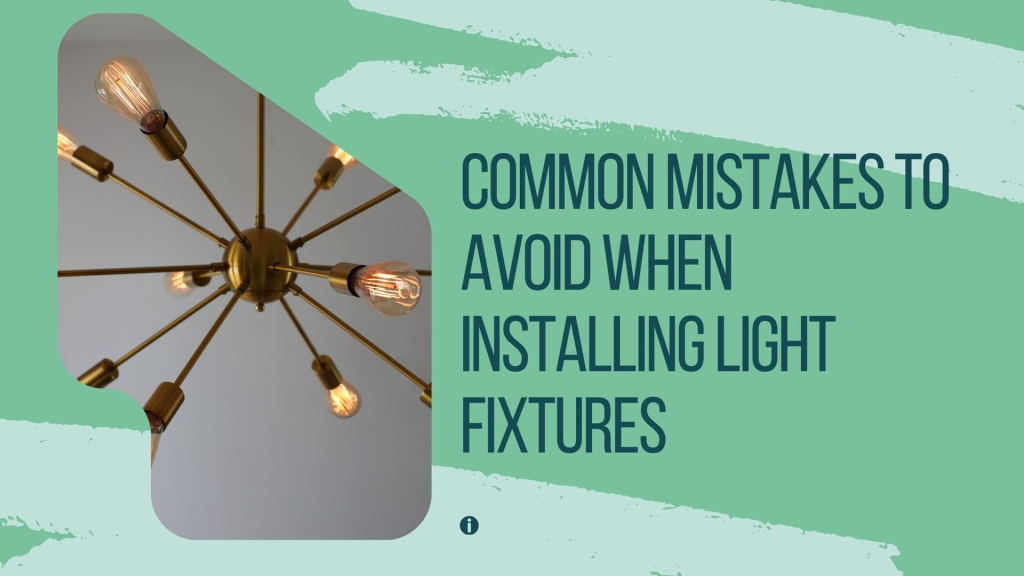
Even changing a light fixture could be a nightmare owing to the following mistakes, causing poor lighting that is sometimes dangerous. Knowing about these mistakes is quite essential for a proper installation. In this blog, we will discuss three major areas where errors often occur: wiring types, the quality of holders of particular fixtures, and the recommended load. Therefore, by keeping all these aspects in mind, one can avoid light fixture installation mistakes and improve their approach to choosing the right light fixture for each room.
So, here are some common lighting errors:
Incorrect Wiring: How to Ensure Safe Electrical Connections
Light fixture installation involves wiring, which is one of the most important stages of the process. Bad wiring leads to electrical shocks, short circuits, and even fire outbreaks. Here are some common wiring mistakes and how to avoid them:
Not turning off the power
Whatever electrical job has to be done, it is important first to switch off the power at the main fuse. If such steps are not taken, the injury that results can be quite severe. You should always verify that the power is off by using a voltage indicator before conducting any operations on the wiring.
Mixing up wires
Light fixtures typically have three types of wires: the hot wire is black, the neutral wire is white, and the grounding/bare copper wire is green. Interchanging them may lead to the fixture getting damaged. Make sure that you provide proper labeling and join the proper wire to the other one in the electric box.
Using the wrong wire connectors
It is also important that the wrong wire connectors are not used, as they result in loose connections that can result in sparks or overheating. Ensure that you employ suitable connectors for the wires you intend to connect; ideally, the size and kind of connectors ought to match the grounded wires. Wire on/off terminations, or twist-on wire connectors, generally known as wire nuts, are usually used in this process.
Overloading circuits
If many bulbs or other electrical appliances are connected to one circuit and the limit of the circuit is reached, the circuit breaker trips or an electrical fire may occur. Also, the capacity of the circuit should be well-distinguished, and the load should be distributed accordingly.
Improper Fixture Placement: Achieving Optimal Lighting
This means that the position you choose to install your light fixtures determines the design quality and utility of the area. Inappropriate placement of the fixture can result in poor lighting and an unpleasant atmosphere. Here are some placement mistakes to avoid:
Installing fixtures too close to walls
The problem with positioning the light fixtures too close to walls is that they cast heavy and unequal shadows. The distance between a fixture and a wall or any other surface should be adequate for the best illumination.
Ignoring ceiling height
The height of your ceiling must determine the kind of lighting options installed and where they ought to be placed. For instance, the pendant lighting has to be placed at the correct height from the ground to ensure enough lighting is provided without having to hinder the view or movement around the place. The distance that the pendants are suspended should be 30 to 36 inches over the countertops or tables and 7 feet over the floor in large rooms.
Inadequate spacing
If the fixtures are too close together or too far apart, then it means that some areas will be either inadequately lit or overlit. Ensure that the different area fixtures are placed at the required distance as stated by the authorities. For instance, it is recommended that recessed lights be at least 4 to 6 feet apart for maximum illumination.
Not considering task lighting
The lighting needed for a specific area in your home is different from the lighting needed for another area. For instance, task lighting can be used in the kitchen and working areas, while ambient or accent lighting is used in the living rooms and bedrooms, respectively. After the zone configuration, arrange your fixtures based on the requirements of a particular room.
Ignoring Load Limits: Understanding Electrical Capacity
The electrical load associated with the circuits or wiring in a particular building should also be well-mastered so that there are no cases of overloading the circuits. Here are some tips to avoid common load-related mistakes:
Calculating wattage incorrectly
On each light fixture, there is a maximum wattage limit that should not be ignored. Going over the specified wattage leads to overheating and may even result in a fire outbreak. Determine the sum of the watts in all the fixtures connected to a circuit in order to avoid overloading the circuit. For example, the standard 15-amp circuit should not overload up to 1,800 watts.
Not using energy-efficient bulbs
Chiseling the use of lights like LED bulbs may ensure that the consumption of power is cut down by the system. Such bulbs use less energy and produce less heat; therefore, they are safer and cheaper than the other ones. Change the conventional bulbs, be they incandescent or halogen bulbs, to LED bulbs to reduce the electrical load.
Overlooking breaker ratings
A circuit breaker is meant to safeguard your electrical system from overloads. This is attested to by the fact that the total load incorporated in a circuit must not surpass the breaker rating. If it happens that the breakers often trip, then it’d be advisable to buy a new electrical circuit that can handle more load.
Failing to upgrade wiring
Most old houses have inefficient electrical systems that cannot support some of the contemporary electrical appliances and installations. To avoid any hazards and electrical problems in your home, you may hire a qualified electrician to upgrade your home’s wiring.
Avoiding lighting installation problems can be tricky. So, therefore it is important to take certain precautions, such as avoiding bad wiring, poor siting of the fittings, and observing the electrical load limits, in order to avoid cases of bad circuiting and messy and poor light-emitting rooms. It is also important that you always observe certain safety precautions when handling electrical devices, particularly the installation of electrical fixtures. If there is something that is beyond your understanding, it will be better that you consult with an expert in electrical installations. In this way, you can avoid typical mistakes concerning lighting and guarantee the proper installation of the light fixture.


